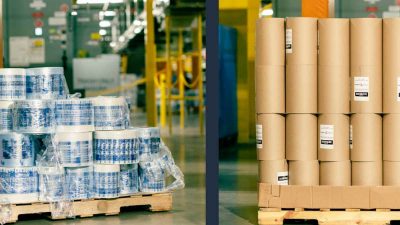From now on, Amazon will use paper fillers made of 100% recyclable materials. The project to transition away from plastic pillow fillers started nine months ago.
In October 2023, Amazon announced its first automated fulfillment center to eliminate plastic delivery packaging in the US. This latest move is Amazon’s largest reduction in plastic waste in North America to date.
The process is still underway, with 95% of the plastic air pillows no longer in use. Amazon hopes to remove all plastic air pillows before the end of the year. This could reduce the 15 billion plastic materials that end up in landfill sites and the ocean annually.
Rethinking packaging
Amazon is focusing on making its packaging smaller and reducing the use of plastic. “We want to ensure that customers receive their items undamaged while using as little packaging as possible to avoid waste and prioritizing recyclable materials,” says the giant retailer.
This year’s Prime Day, “nearly all of our customer deliveries” will be delivered without plastic air pillows.
“It’s a great example of how we thoughtfully test and scale new solutions to protect our customer experience,” says Pat Lindner, vice president of sustainable packaging.
An effortless change
Amazon tested the paper filler in third-party engineering labs. It was discovered that it “offers the same if not better” protection to products compared to the plastic air pillows.
The paper filler is also curbside recyclable, making it easier for customers to recycle the material at home.
“It’s not only easier to work with, but the machinery gives us more space, so it’s easier to pack orders,” says Christian Garcia, fulfillment associate in California.
Amazon’s packaging journey
The journey to sustainable packaging has been a long one for Amazon. They’ve “invested in it for many years,” just like it works to ship items without any additional packaging.
Last year, Amazon took bold steps to remove the additional packages on parcels and reduce the extra waste on landfill sites. Part of its effort included a program called ‘Ship In Own Container (SIOC).’ This is to help reduce single-use plastic packaging by more than 11%.
Photo credit: Amazon.com
NOW READ: Robot recycling: Amazon invests in technology to minimize harm
About the author
Mia is a multi-award-winning journalist. She has more than 14 years of experience in mainstream media. She's covered many historic moments that happened in Africa and internationally. She has a strong focus on human interest stories, to bring her readers and viewers closer to the topics at hand.













